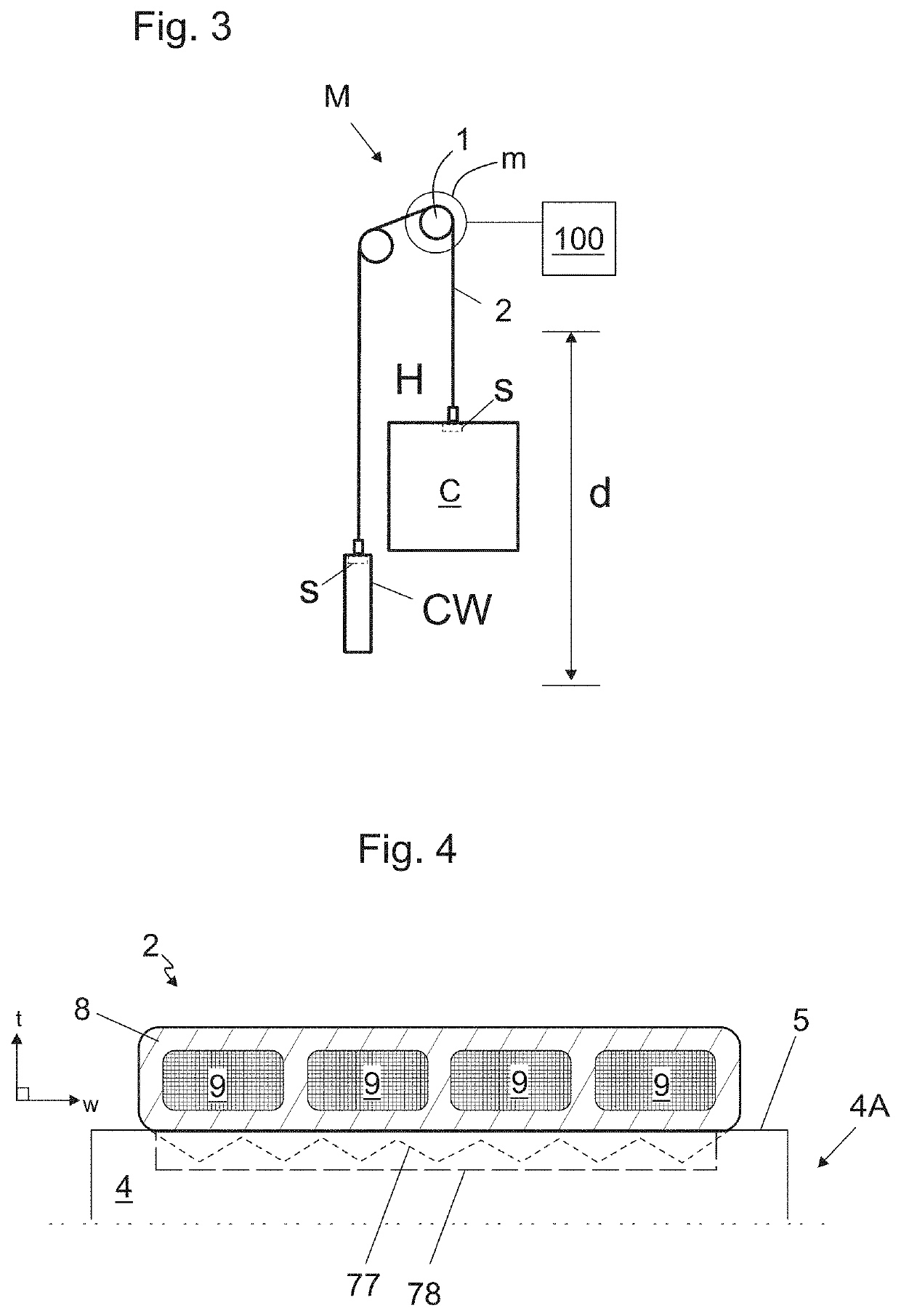Elevator drive machinery and elevator
a technology of drive machinery and elevators, applied in elevators, mine lifts, transportation and packaging, etc., can solve the problems of uneven force of parallel ropes, so as to reduce the turning radius of the rope passing.
- Summary
- Abstract
- Description
- Claims
- Application Information
AI Technical Summary
Benefits of technology
Problems solved by technology
Method used
Image
Examples
Embodiment Construction
[0083]FIG. 1 illustrates a drive machinery M for an elevator according to a preferred embodiment. The drive machinery M comprises a rotatable drive sheave 1 for driving plurality of ropes 2 of the elevator, and a motor m for rotating the drive sheave 1. The motor m is preferably an electric motor. The drive sheave 1 comprises a drive sheave body 3 rotatable around a rotational axis X. The drive sheave 1 moreover comprises a plurality of rim arrangements 4A mounted on the drive sheave body 3 side by side in direction of said rotational axis X, each said rim arrangement 4A defining a circular outer rim 5 for transmitting traction to a rope 2, and on which circular outer rim 5 a rope can be placed to rest. The outer rims 5 of the rim arrangements 4A are coaxial with each other. Said rotational axis X is a rotational axis of the circular outer rims 5.
[0084]The drive machinery M is suitable for exerting traction via the rim arrangements 4A on the ropes 2 passing around them. In FIG. 1, t...
PUM
 Login to View More
Login to View More Abstract
Description
Claims
Application Information
 Login to View More
Login to View More - R&D
- Intellectual Property
- Life Sciences
- Materials
- Tech Scout
- Unparalleled Data Quality
- Higher Quality Content
- 60% Fewer Hallucinations
Browse by: Latest US Patents, China's latest patents, Technical Efficacy Thesaurus, Application Domain, Technology Topic, Popular Technical Reports.
© 2025 PatSnap. All rights reserved.Legal|Privacy policy|Modern Slavery Act Transparency Statement|Sitemap|About US| Contact US: help@patsnap.com



